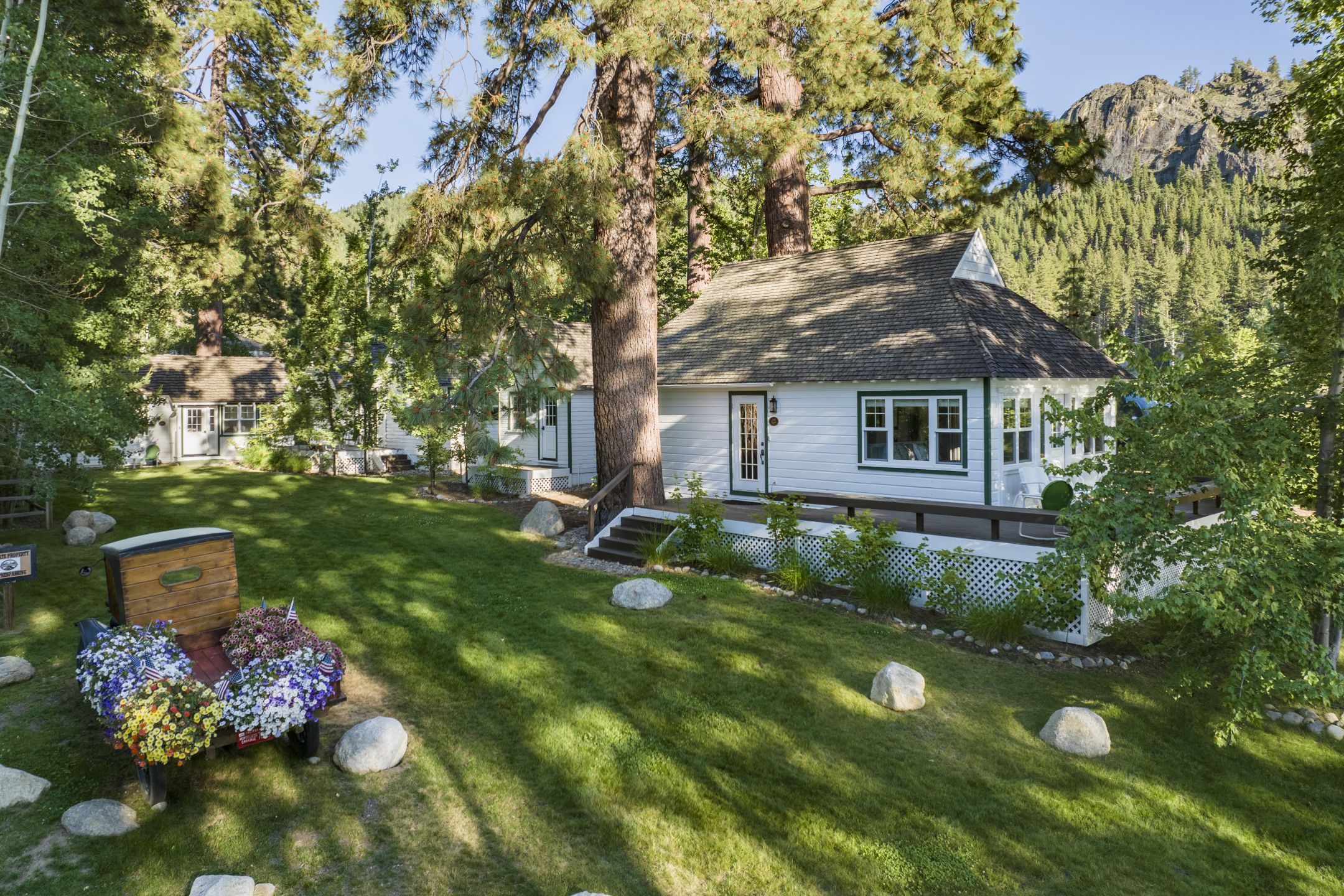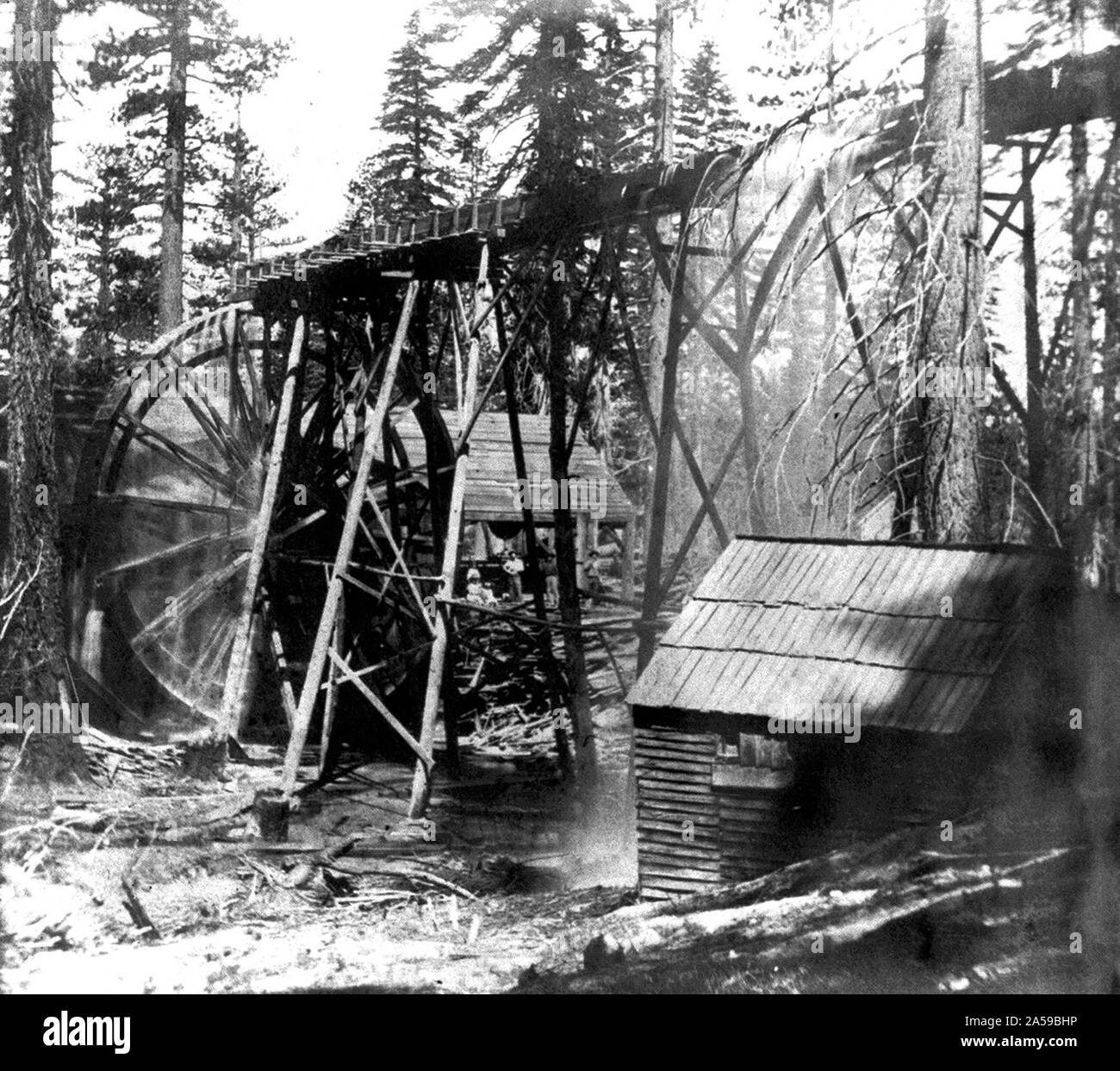
Lake Tahoe’s Enduring Saga: From Sacred Ground to Environmental Battleground
More than just a postcard-perfect panorama of crystalline waters framed by snow-capped peaks, Lake Tahoe is a living chronicle of California’s, and indeed America’s, evolving relationship with its wild spaces. Its history is a dramatic tapestry woven from ancient spiritual reverence, the brutal efficiency of industrial logging, the gilded dreams of leisure, and the hard-won battles for environmental preservation. To understand Lake Tahoe is to journey through millennia, witnessing a landscape transformed by human ambition, then fiercely protected by an awakening conscience.
The Ancient Heartbeat: Da ow a ga and the Washoe People
Long before European eyes gazed upon its shimmering expanse, Lake Tahoe, or Da ow a ga ("Edge of the Lake") as it was known, was the spiritual and physical heartland of the Washoe Tribe. For at least 10,000 years, the Washoe lived in harmony with the Tahoe Basin’s rhythms, their lives inextricably linked to its abundant resources. They practiced a seasonal migration, spending summers by the lake’s shores, fishing its depths for Lahontan cutthroat trout, gathering pine nuts, and hunting game in the surrounding forests. Winters saw them descend to the warmer valleys.

Their relationship with Da ow a ga was one of deep respect and sustainable stewardship. The lake was not merely a resource; it was a sacred entity, a place of healing, ceremony, and connection to their ancestors. Washoe elders passed down stories and knowledge of the land, ensuring its health for future generations. This ancient, symbiotic existence stands in stark contrast to the dramatic changes that would follow, a testament to a way of life that understood the delicate balance of an ecosystem.
Discovery and the Dawn of Exploitation
The Washoe’s millennia-old stewardship was irrevocably altered in the mid-19th century. In 1844, explorer John C. Fremont and his cartographer Charles Preuss became the first documented Europeans to lay eyes on the lake. Fremont, captivated by its grandeur, famously described it as "a sheet of liquid silver," a vast, serene expanse nestled high in the Sierra Nevada. He named it Lake Bonpland, though the name didn’t stick. It was surveyor Dr. Henry DeGroot who, in 1862, proposed the name Tahoe, derived from the Washoe word Da ow a ga, which he understood to mean "big water."
This "discovery" coincided with the California Gold Rush, which, while not directly impacting Tahoe’s shores, created an insatiable demand for resources that would soon engulf the basin. The real catalyst for Tahoe’s transformation, however, lay across the Carson Range in Nevada: the Comstock Lode.
The Comstock Lode and the Timber Barons: A Forest Denuded
The discovery of silver in Virginia City in 1859 triggered an economic explosion that would dramatically reshape the Tahoe Basin. The Comstock Lode mines, the deepest and richest in the world at the time, required immense quantities of timber – for shoring up tunnels, fuel for steam engines, and construction of the booming city. Lake Tahoe, with its vast, ancient forests, was perfectly positioned to supply this demand.
What followed was an era of unprecedented, relentless logging. Timber barons like Duane L. Bliss and the Glenbrook Company established massive operations, employing thousands of men and innovative technologies to extract the timber. V-flumes, elaborate wooden troughs that used water to transport logs and lumber down steep mountainsides to mills and then to Virginia City, became iconic symbols of this period. Steam donkey engines dragged massive logs, and narrow-gauge railroads crisscrossed the basin, efficiently moving timber to the flumes and steamboats that plied the lake.
The scale of the operation was staggering. Within a few decades, vast swathes of Tahoe’s old-growth forests, some trees centuries old, were clear-cut. Historian David W. Toll notes that "the Tahoe Basin became the woodpile for the Comstock." The once pristine hillsides were left denuded, scarred by logging roads, and vulnerable to erosion. The environmental impact was severe: siltation flowed into the lake, affecting water clarity, and the natural ecosystem was profoundly disrupted. This period represents a stark lesson in the short-sighted pursuit of resources, where the long-term ecological consequences were sacrificed for immediate economic gain.

The Gilded Age of Tourism: From Resource to Retreat
As the Comstock Lode began to wane in the late 19th century, Lake Tahoe’s destiny began to shift from an industrial resource to a recreational paradise. The very infrastructure built for logging – steamboats, roads, and even some of the former timber company lands – facilitated this transformation. Wealthy industrialists, railroad magnates, and socialites from San Francisco and other urban centers discovered Tahoe’s unparalleled beauty.
Grand hotels began to spring up around the lake, such as the Tallac House on the South Shore and the Glenbrook Inn on the East. These opulent resorts offered lavish accommodations, fine dining, and entertainment, catering to an elite clientele who arrived by steamboat and stagecoach. Lake Tahoe became a symbol of status and an escape from the city heat, a place for leisurely cruises, fishing, hunting, and mountain recreation.
One of the most enigmatic figures of this era was George Whittell Jr., an eccentric millionaire who, in the 1930s, bought up nearly 40,000 acres of land on Tahoe’s undeveloped East Shore, along with 27 miles of shoreline. His intent was not to develop, but to preserve his privacy. He built a magnificent stone mansion, the Thunderbird Lodge, and lived a reclusive life, often hosting parties with his pet elephant and lion. Ironically, his desire for isolation inadvertently saved a significant portion of Tahoe’s shoreline from the rampant development that would eventually engulf other areas. Whittell’s legacy is a complex one – a man who hoarded land for personal enjoyment, yet in doing so, became an unwitting early conservationist.
The Post-War Boom and the Casino Era
The mid-20th century ushered in a new chapter for Lake Tahoe: mass tourism and rapid development. The post-World War II economic boom, coupled with improved infrastructure like the completion of Highway 50, made Tahoe accessible to a broader segment of the population. The 1960 Winter Olympics at Squaw Valley (now Palisades Tahoe) further cemented Tahoe’s reputation as a world-class winter sports destination, attracting skiers and outdoor enthusiasts from around the globe.
Simultaneously, Nevada’s legalized gambling led to the rise of casinos on the South Shore (Stateline) and North Shore (Crystal Bay). These glittering establishments, offering entertainment, dining, and gaming, drew millions of visitors, creating a vibrant, often bustling, atmosphere. High-rise hotels and sprawling resorts began to dominate the skyline in these areas, particularly at South Lake Tahoe, which quickly became the basin’s largest city.
While this era brought economic prosperity, it also brought unprecedented development pressure. Unregulated construction, increased traffic, sewage runoff, and the general impact of millions of visitors began to take a toll on the lake’s delicate ecosystem. The very clarity that had mesmerized Fremont and attracted Gilded Age elites began to noticeably diminish.
The Environmental Reckoning: Keeping Tahoe Blue
By the late 1960s and early 1970s, the warning signs were undeniable. Scientists and concerned citizens observed a measurable decline in Lake Tahoe’s legendary clarity. Sediment from construction, nutrients from sewage and storm runoff, and air pollution were feeding algae growth, turning the iconic sapphire waters a greener hue. The lake, once considered too vast and pristine to be affected by human activity, was clearly vulnerable.
This realization spurred a powerful environmental movement. The iconic slogan "Keep Tahoe Blue" emerged, rallying public support for conservation. In 1969, a landmark bi-state compact between California and Nevada, approved by Congress, established the Tahoe Regional Planning Agency (TRPA). This agency was given the unprecedented authority to regulate development and protect the environmental quality of the entire Lake Tahoe Basin, transcending state lines.
The TRPA implemented strict regulations on construction, land use, and environmental protection. Scientists began rigorous monitoring of the lake’s clarity, using Secchi disks to measure how deep one could see into the water. Early measurements in the 1960s showed clarity exceeding 100 feet; by the late 1990s, it had plummeted to just over 60 feet. This data became a powerful tool for advocating for stronger environmental policies.
The fight to "Keep Tahoe Blue" has been a continuous, uphill battle. It involves complex scientific research, massive restoration projects (like stream environment zone restoration to filter runoff), improved sewage treatment, and ongoing public education. While clarity measurements fluctuate year to year, there have been periods of stabilization and even slight improvement, demonstrating that concerted efforts can make a difference. The lake’s clarity is now a bellwether for the health of the entire ecosystem and a symbol of the environmental movement’s enduring commitment.
Tahoe Today: A Jewel in Peril and Promise
Today, Lake Tahoe stands as a testament to both human impact and human ingenuity. It remains a global destination, attracting millions for its unparalleled beauty, world-class skiing, hiking, boating, and vibrant casino entertainment. Yet, its future is still precariously balanced. Climate change poses new threats, from increased wildfire risk to changing precipitation patterns that affect snowpack and water levels. The ongoing pressure of tourism and development, even under strict TRPA guidelines, requires constant vigilance.
The history of Lake Tahoe is a powerful narrative of transformation. From the ancient, sustainable rhythms of the Washoe, through the voracious appetite of the Comstock Lode, the opulent leisure of the Gilded Age, and the bustling energy of the casino era, Tahoe has mirrored humanity’s aspirations and its flaws. Its journey to environmental awareness, culminating in the "Keep Tahoe Blue" movement and the creation of the TRPA, offers a vital lesson: even the most magnificent natural wonders are fragile, and their preservation requires continuous dedication, collaboration, and a profound respect for the delicate balance of nature. The saga of Lake Tahoe continues, a constant reminder that the responsibility for its enduring clarity and beauty rests with all who cherish this extraordinary jewel of the Sierra.


